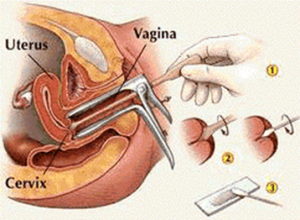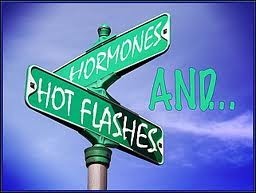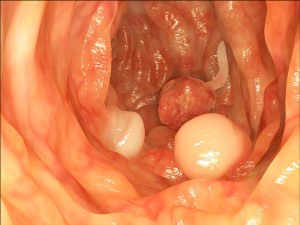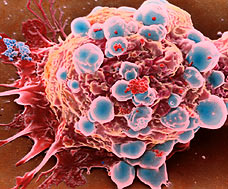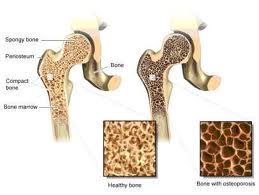Recently there has been a lot of publicity around the topic of postpartum depression (PPD). Typically the reports originate from a case where depression led to catastrophic consequences. It is sad that it often takes a tragedy before a problem like this is publicly more acknowledged. But sadly reports are often one-sided and are missing vital information about pre-existing risk factors. The family doctor often misses the diagnosis of postpartum depression. There is often denial on behalf of the mother and family. The mother is getting no support from support groups, even though there are such groups.
Swift treatment often not given
And swift treatment that would be available is often not given. The results are finally making headlines. Once a mother is desperate and deeply depressed (“psychotic depression”) she is capable of killing the baby, herself and others who are close. PPD affects 15% of mothers (Ref.1); a small percentage of them may have postpartum psychosis, which is the most severe form of PPD.
Risk factors for postpartum depression
Ref. 1 reviews several risk factors that can lead to postpartum depression. For instance, a history of a major depressive episode or anxiety attack during the pregnancy predisposes a young mother to develop PPD. However, there may also have been a history of dysphoria (intense feeling of discontent) before her periods in the past; stressful events during the pregnancy or right after birth. Often there is poor social support or a marital conflict. Other factors are low income, young maternal age or immigrant status with deprivation. A lack of support from the partner can also be a major factor.
Up to 85% of women experience postpartum blues within the first 10 days after the delivery of the baby. Symptoms such as mood swings, fatigue, confusion, tearfulness, mild elation and irritability are common during these initial days following her delivery.
Progesterone levels decreased up to 3 months
Researchers found a decrease in progesterone levels following delivery for at least one month, sometimes up to 3 months. This leads to sleep problems (insomnia), which coupled with the baby crying in the middle of the night causes more sleep disruption. Electroencephalography studies documented abnormal brain wave patterns in women following the birth of a child.
Only 1 in 500 mothers after birth develop what physicians call “postpartum psychosis”, which is a recognized psychiatric emergency. The symptoms here are extreme mood swings with confusion, poor judgment, disordered thoughts (“delusions”), paranoia (where they think that someone is after them or it is the baby’s fault that they feel that way).
Erratic behavior and impaired functioning
Erratic behavior and impaired functioning are also part of this symptom complex. It is this state that needs to be monitored in a psychiatric unit as it is associated with a high suicide and homicide rate. A psychiatrist with experience in treating PPD needs to treat the patient.
Urbanization leads to a lack of support, which is particularly devastating to new mothers who need all the support they can get. This is reflected in a higher percentage of PPD in urban areas versus the percentage of PPD in more rural areas where there is more family support.
Hormone changes with postpartum depression
Some people do not understand why a woman who just had a baby would not be happy and content. Most women are. However, the stress from the pregnancy and from childbearing can be too much on her system. There can be a point where the hormones no longer are in balance and the young mother loses her coping mechanisms.
Serotonin concentrations in the brain of women during pregnancy are at a higher level due to higher estrogen levels that slow down the degradation of serotonin. Serotonin is the brain hormone that makes you feel good. Estrogens and progesterone are very high during the pregnancy, but this changes right after the baby’s delivery and during the time of recovery in the first few days and weeks. Studies showed that there was a 15% higher thyroid autoantibody rate in postpartum depression patients in comparison to controls without depression.
Patients with higher thyroid autoantibody rates respond to thyroid
Patients with thyroid autoantibodies associated weakly with postpartum depression and responded favorably to thyroid replacement therapy. Progesterone levels were much lower in patients with depression and in patients without depression following delivery. The reason for this likely is the fact that with the delivery the placental source of natural progesterone disappeared. Researchers replaced progesterone in a group of patients, but they die not observe any significant improvement of PPD. However, they did not explain whether the progesterone replacement involved bioidentical hormones or synthetic hormones.
Dr. Michael Platt described a case of a postpartum woman who was hypothyroid as well (Ref.2). She responded to hormone replacement with thyroid hormones and progesterone by shedding 60 pounds (she always had a weight problem) over 10 months changing from a size 20 to a size 4. She was able to wean herself off the anti-depressants.
Breast feeding women on bioidentical progesterone
In breast feeding women this could be a significant difference as women on bioidentical progesterone can breast feed and will positively influence their breast-fed child’s brain development (brain cells have a lot of progesterone receptors, which are stimulated by progesterone).
A recent Canadian study involving pregnant women and women after delivery of their babies showed that there was a significant drop of progesterone levels in saliva samples for several weeks, particularly with breast feeding. The authors explained that the lack of ovulation with a lack of progesterone synthesis in the ovaries was responsible for this. It takes several weeks for most women to regain regular menstrual cycles. It would follow from this that there is room for bioidentical progesterone replacement in the first few months of the postpartum period until the ovaries have resumed their normal cyclical hormone activity.
Conventional treatment for postpartum depression
With baby blues the symptoms are much less severe (in comparison to PPD) and are starting 2 to 3 days after childbirth, resolving spontaneously within 10 days after delivery. PPD occurs within 3 months following delivery and responds to treatment with antidepressants and psychotherapy such as cognitive behavioral therapy. Breast feeding needs to be stopped, as it is known that metabolites of the antidepressants end up in breast milk. Typically, a less toxic antidepressant is used like paroxetine (Paxil), otherwise citalopram (Celexa), and fluoxetine (Prozac). In the rare cases where PPD is so severe that psychotic symptoms are present (postpartum psychosis) hospitalization is mandatory (Ref.3). Some of these cases may require electroconvulsive therapy (ECT) and/or lithium treatment for mood stabilization. Thyroid hormone therapy has also shown a beneficial effect in treating antidepressant-resistant cases of PPD (Ref.4).
Alternative treatment of postpartum depression
Although review texts of the treatment of PPD mention that estrogen replacement in postnatal women with PPD was beneficial, there is a warning that this could cause blood clots and anticoagulant measures would have to be combined with this to prevent deep vein thrombosis. Researchers suggested progesterone replacement, which is a treatment modality where blood clots are no danger. However, there are no formal trials yet, so most medical professionals ignore this suggestion. Here is forum of women who have taken postpartum progesterone with positive effects.
Dr. Katherina Dalton published a trial involving 30 PPD patients with a positive response rate of 95% when treated with natural progesterone.
Bioidentical progesterone treatment reduces symptoms of postpartum depression
Before treatment patients were suffering from an average of 7.57 symptoms, after the treatment only 2.1 symptoms remained. (Figures with details regarding this study under the above link).
There are many descriptive observations without controls like this where natural progesterone creams are part of a holistic approach to treating PPD. Dr. Mercola describes here how useful natural progesterone therapy can be. He also cautions that the woman should take bioidentical progesterone cyclically to mimic nature’s biorhythm to allow progesterone receptors to recover in between treatments.
There are many websites that have useful information about natural progesterone cream treatment for PPD, such as this.
Conclusion
It is common sense that a woman may need natural progesterone following a delivery. She just gave birth to her placenta, which was a virtual progesterone factory. It protected her body and the baby’s brain all throughout the pregnancy. If women decided to use natural progesterone for 3 to 6 months, this would make a big difference. The majority of women would not experience the baby blues or PPD. Eventually regular menstrual cycles return, the patient’s own ovarian progesterone production resumes and there no longer is a need for progesterone cream until after the birth of the next child or at the arrival of menopause. Medicine is full of examples where common sense was applied for effective treatment options despite missing randomized studies.
Natural progesterone treatment of PPD
Natural progesterone treatment of PPD is one such example. Physicians used bioidentical progesterone intuitively, but it worked in many patients. The progesterone receptors do not distinguish whether or not researchers did a clinical trial. But they do not like the synthetic versions of progesterone, as they block the receptors leading to progesterone deficiency. The physician can combine natural progesterone treatment with traditional treatments of PPD.
More information on postpartum depression: http://nethealthbook.com/mental-illness-mental-disorders/mood-disorders/postpartum-depression/
References
1.Teri Pearlstein, MD, Margaret Howard, PhD, Amy Salisbury, PhD and Caron Zlotnick, PhD: “Postpartum depression” : American Journal of Obstetrics and Gynecology – Volume 200, Issue 4 (April 2009)
2. Dr. Michael E. Platt: The Miracle of Bio-Identical Hormones; 2nd edition, © 2007 Clancy Lane Publishing, Rancho Mirage, Ca/USA (p.53-55).
3. Bope & Kellerman: Conn’s Current Therapy 2013, 1st ed.© 2012 Saunders
4. Jacobson: Psychiatric Secrets, 2nd ed. © 2001 Hanley and Belfus


